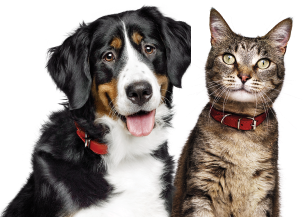Standardschnauzern kombinerar ovanlig intelligens och tillförlitlighet med ett livligt temperament. I detta land och i Tyskland används dessa hundar främst som personliga vakter och följeslagare. Deras hängivenhet och tapperhet tillsammans med deras intelligens gör dem lämpliga i denna roll. De är vaksamma, modiga, lätttränade och lojala mot familjen.
Standardschnauzrar behöver en hel del motion. De behöver promenader och lektid. Om du inte ger dem tillräckligt med motion kommer de att träna själva! Att springa genom huset med leksaker, jaga barnen, stå i vägen och i grunden vara ett skadedjur är det sätt som standardschnauzrar visar sin tristess och rastlöshet. Eftersom de är familjeorienterade föredrar de att vara med sin familj snarare än isolerade i en kennel eller på bakgården.
Tidig socialisering och omfattande träning är nödvändiga för att en standardschnauzer ska bli den typ av familjedjur som du skulle vara stolt över att äga. Den höga intelligensnivån kan vara en välsignelse eller en förklädd förbannelse. Medan standard schnauzervalpen lär sig snabbt, kommer han också att använda den intelligensen för att komma på smarta sätt att undvika att lyda sin vårdnadshavares kommandon. Dessa hundar tror ofta att de har ett bättre sätt att göra saker på.
Utseendet på standardschnauzern är inte ett naturligt utseende. Man måste vara beredd att spendera tid på att strippa eller klippa, trimma eller saxa pälsen, eller använda tjänster av en professionell groomer. Schnauzer fälls. Att borsta, bada och sköta är nödvändigt för denna hunds allmänna hälsa.
Detta är en tysk ras från antiken, som förekommer i målningar av Durer och Rembrandt. I Mechlinburg står en staty från 1300-talet av en jägare med en schnauzer hukande vid sina fötter på marknadsplatsen. Alla schnauzrarna hade sitt ursprung i de närliggande kungadömena Bayern och Wurtemmburg.
Standardschnauzrar rapporteras vara en korsning av den grå vargspetsen och, senare, den svarta tyska pudeln med den trådhåriga pinscherstammen.
Ursprungligen ansågs den vara en terrier i USA på grund av hundens rykte som en utmärkt rattare, schnauzern klassades alltid som en brukshund i Tyskland på grund av sin kallelse som gårdshund, ratter och vakt. Man tror att över 90 procent av hundarna som användes för att vakta bondens kärror som kom ut på marknaden före första världskriget var av starkt schnauzerblod i Tyskland.
Standardschnauzrar ställdes först ut i Tyskland som trådhåriga pinscher 1879. En standard för rasen publicerades 1880, och rasen gjorde snabba framsteg som utställningshund. De har varit allmänt kända i delstaterna först sedan första världskriget.























